Exploring Small Eco Houses: Design and Sustainability
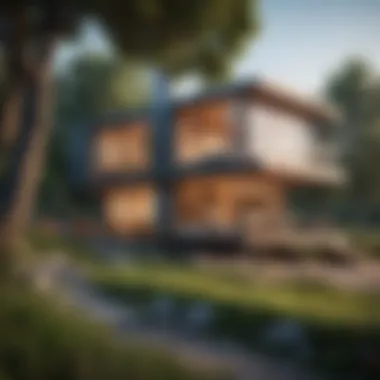
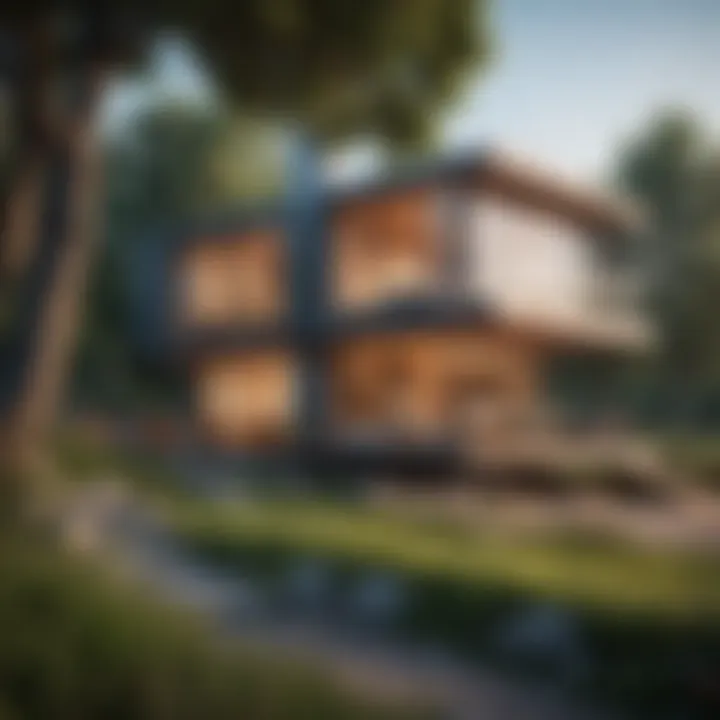
Intro
In recent years, the rise of small eco houses has captivated both architects and homeowners. These structures embody a philosophy that marries aesthetic appeal with sustainable living. People today face a dilemma; they seek comfort but also prioritize environmental responsibility. Small eco houses promise to address this need by providing environmentally friendly, stylish, and efficient living spaces.
The concept of small eco houses encompasses various aspects of design, construction, and lifestyle choices all aimed toward minimizing environmental impact. From innovative design inspirations that emphasize simplicity to sustainable building materials, each aspect contributes to a larger movement toward greener living. This article will explore how these homes can reshape contemporary living while improving community well-being.
Design Inspiration
The aesthetic value of small eco houses is crucial. Design inspiration often draws from nature and simplicity. Architects and homeowners alike look toward minimalism, aiming to create spaces that are functional yet beautiful. This practical yet appealing philosophy allows for personal expression without overwhelming the environment.
Current Trends in Interior Design
Today, many trends influence the interiors of small eco houses. Feelings of openness and airiness are enhanced by the use of natural light and open floor plans. Key aspects include:
- Natural Materials: Wood, bamboo, and recycled materials are often favored as they extend warmth and authenticity.
- Open Spaces: Creating unconstrained areas that enhance flow and functionality.
- Multi-Functional Furniture: Using convertible items helps maximize space without sacrificing comfort.
Homeowners are not merely looking to fill their spaces but rather to curate them thoughtfully. Incorporating sustainable practices and materials is essential in this journey.
Color Schemes and Palette Ideas
When selecting colors for small eco houses, it is vital to choose hues that calm and soothe. Neutral palettes are often preferred as they blend harmoniously with natural surroundings. Some popular choices are:
- Soft Greens: They evoke a sense of peace and connection to nature.
- Warm Earth Tones: Browns and beiges can bring a cozy feeling into spaces.
- Cool Blues: These colors can create a refreshing atmosphere, reminiscent of the sky or water.
For accents, brighter colors can be integrated, but they should complement the overall scheme rather than dominate the space.
"Sustainability does not mean sacrificing beauty; it can enhance living spaces in unexpected ways."
Gardening Techniques
Gardening plays a crucial role in the small eco house philosophy. The connection between healthy living environments and gardening cannot be overstated.
Plant Selection and Care
Choosing the right plants is essential for success. Homeowners should aim for native plants that thrive in their respective regions. Some viable options include:
- Succulents: Low maintenance and require minimal watering.
- Herbs: Adding culinary plants like basil or mint provides both beauty and utility.
- Pollinator-Friendly Plants: These contribute to local biodiversity while beautifying the space.
Regular maintenance is critical. Homeowners should develop simple care routines, which may involve watering schedules or seasonal planting strategies.
Indoor vs. Outdoor Gardening
Both indoor and outdoor gardening can enhance the living experience. Indoor gardens can provide aesthetic value, improve air quality, and contribute to mental well-being. On the other hand, outdoor gardens expand the living space, allowing for relaxation and community interaction. Where possible, combining both strategies generates a holistic living experience.
The holistic approach of small eco houses goes beyond mere construction. Each aspect contributes to a sustainable lifestyle focused on well-being and connection to our environment.
Prologue to Small Eco Houses
Small eco houses represent an important shift in the way we approach modern living. They emphasize sustainability, efficiency, and minimalism in a world where resource consumption continues to rise. By focusing on compact, environmentally friendly designs, these homes not only reduce ecological footprints but also provoke deeper conversations around lifestyle choices and community engagement.
Defining Small Eco Houses
Small eco houses are typically characterized by their small size, usually under 1,000 square feet, and their use of sustainable materials and energy-efficient technologies. The core idea is to create a livable space that meets human needs while respecting the environment. These homes employ sustainable practices, such as using recycled materials in construction and implementing energy-saving features like solar panels and efficient insulation systems. A significant aspect is the layout, which maximizes utility without unnecessary space, adhering to the principle that less can indeed be more.
"Small eco houses challenge the conventional notion of spacious living, presenting instead a model of efficiency and responsibility."
This definition shifts focus from traditional spacious homes towards innovative designs that prioritize functionality and sustainability. In essence, they foster a lifestyle that embraces simplicity, leaving a lighter impact on the planet.
Historical Context and Evolution
The idea of small eco houses is not entirely new. Its roots can be traced back to ancient architecture, where resourceful and efficient designs were essential for survival. Early settlers often utilized local materials, creating dwellings that blended into their environments. However, the modern movement began to gain momentum in the late 20th century as environmental awareness increased.
The 1970s energy crisis launched a wave of interest in energy efficiency and alternative building methods. Subsequently, various architectural movements emerged, promoting sustainable building practices. By the 1990s, eco-friendly designs proliferated, with pioneers like the Earthship community showcasing houses built from recycled materials such as tires and bottles. These developments have paved the way for contemporary small eco houses, demonstrating that sustainability and modern living can coincide effectively.
Today, the evolution continues. Innovations in design and technology have made small eco houses more accessible and appealing. Homeowners can now choose from diverse styles that reflect personal tastes while staying rooted in sustainability. Understanding this historical context is crucial for appreciating how the concept of small eco houses has matured into a viable option for future living.
Benefits of Small Eco Houses
The design approach of small eco houses holds substantial importance in our current socio-economic landscape. Emphasizing sustainability, affordability, and community integration, these homes offer a variety of benefits that are critical to both homeowners and society at large. They adapt well to modern living's increasing demand for eco-conscious choices and efficient resource use.

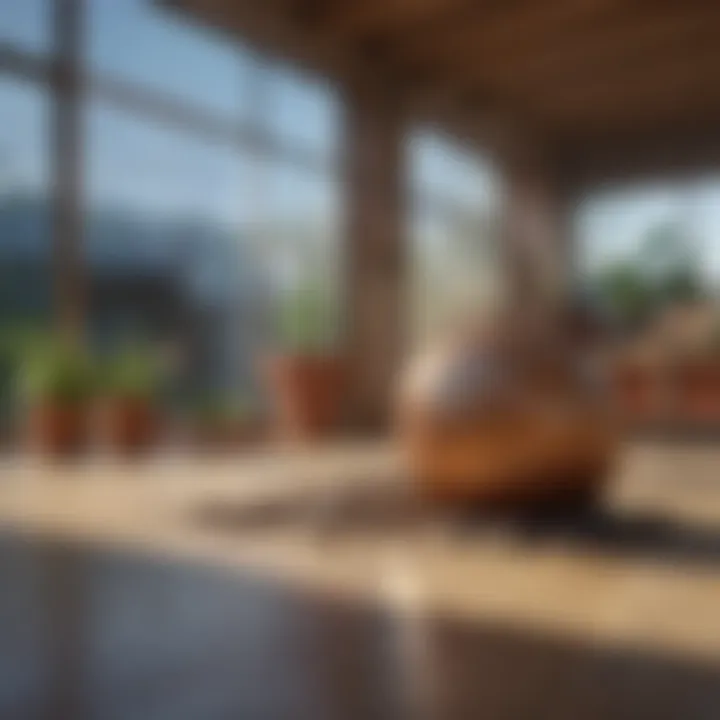
Environmental Impact
Small eco houses minimize environmental footprints through their thoughtful design and construction choices. Using renewable resources such as bamboo or reclaimed wood reduces dependency on newly harvested materials. This strategy contributes positively to forest preservation and the reduction of waste. Additionally, many of these homes are constructed with energy-efficiency in mind.
For instance, installing high-quality insulation and energy-efficient windows can significantly lower energy consumption. Incorporating renewable energy systems, such as solar panels, allows homeowners to generate their own electricity.
Key environmental impacts include:
- Reduction in greenhouse gas emissions
- Decreased energy consumption
- Enhanced water conservation through efficient plumbing systems
- Preservation of natural resources
"The small eco house movement exemplifies how our built environments can harmoniously coexist with nature."
Economic Benefits
Investing in small eco houses also presents numerous economic advantages. With rising property prices, smaller homes are often more affordable than their larger counterparts. This affordability enables more individuals and families to become homeowners, promoting financial stability and responsible living.
Lower maintenance costs contribute further to economic benefits. Energy-efficient homes require less spending on utility bills, and sustainable materials often lead to reduced repair costs.
Economic benefits include:
- Lower upfront purchase prices
- Decreased utility bills
- Reduced long-term maintenance costs
- Potential tax benefits for using renewable energy sources
Psychological Well-being
Beyond the tangible advantages, small eco houses foster a unique psychological environment conducive to well-being. The simplicity and intentional design encourage decluttering, leading to a lower-stress lifestyle. A smaller living space often translates to less space to maintain, allowing for a greater focus on quality rather than quantity.
Moreover, living in harmony with nature, often facilitated by eco-friendly designs, promotes mental health and emotional stability. People find solace in green spaces and natural light, which are integral components of many small eco homes.
Aspects influencing psychological well-being include:
- Reduced stress and anxiety through simplified living
- Enhanced connection with nature and community
- Improved quality of life through intentional design
By understanding these benefits, we recognize the value of small eco houses not only as a sustainable choice but also as an investment in a healthier life and planet.
Sustainable Design Principles
Sustainable design principles are crucial in constructing small eco houses. These principles focus on reducing environmental impact while maximizing efficiency in the use of resources. It involves a careful approach to both design and materials used in the construction process. Integrating these principles not only improves energy efficiency but also enhances the overall aesthetic and functionality of the living space. These considerations lead to healthier living environments and lower utility costs, appealing to both eco-conscious homeowners and those looking to reduce expenses.
Eco-Friendly Materials
Recycled Materials
Recycled materials play a significant role in eco-friendly building practices. Their main characteristic is that they reduce the amount of waste sent to landfills. Popular choices include reclaimed wood, recycled steel, and salvaged bricks. Using these materials contributes to the overall goal of sustainability by minimizing the environmental footprint associated with sourcing new materials. A unique feature of recycled materials is their diverse aesthetic, allowing for creative design solutions that do not compromise on style. However, it is important to note that the availability of recycled materials can vary, potentially posing challenges in sourcing.
Renewable Resources
Renewable resources are vital for achieving long-term sustainability in eco house design. These resources include materials like bamboo, cork, and sustainably sourced wood. Their key characteristic is that they can be replenished naturally over time, making them a more sustainable option compared to non-renewable materials. The use of renewable resources supports the goal of reducing dependency on finite resources. However, it is essential to ensure that these materials are sourced responsibly to avoid negative impacts on ecosystems.
Energy Efficiency Strategies
Passive Solar Design
Passive solar design is an effective strategy for maximizing energy efficiency in small eco houses. This approach utilizes the sun's energy for heating and cooling without mechanical systems. A key characteristic of passive solar design is the careful orientation of windows and thermal mass materials, which capture and store solar energy. This choice is advantageous as it can significantly reduce heating and cooling costs, making it a favored method in sustainable building. However, it requires careful planning and design considerations to be implemented successfully.
Insulation Techniques
Insulation techniques are crucial for maintaining energy efficiency in eco houses. Effective insulation minimizes energy loss, keeping homes comfortable regardless of external weather conditions. A key characteristic of these techniques is the use of high-performance materials that meet or exceed energy code requirements. This makes it a beneficial choice for homeowners looking to lower energy bills. However, the initial costs of high-quality insulation materials can be a disadvantage for some, highlighting the importance of long-term planning and investment in sustainability.
Innovative Construction Techniques
Innovative construction techniques are fundamental in designing small eco houses. They play a crucial role in achieving sustainability, efficiency, and adaptability. These methods utilize advancements in technology and materials to create structures that not only minimize environmental impact but also maximize usability. Homeowners and designers alike can benefit from understanding and applying these techniques in their projects.
Prefabrication Methods
Prefabrication is one notable technique that streamlines the construction process. In this method, components of the house are built off-site, then transported and assembled on location. This can lead to significant time and cost savings while also reducing waste.
Benefits include:
- Quality Control: Building in a controlled environment allows for thorough inspections, leading to higher-quality structures.
- Efficiency: Construction times are typically shorter, allowing homeowners to move into their eco houses sooner.
- Reduced Waste: Off-site construction methods often produce less waste, aligning with sustainable building practices.
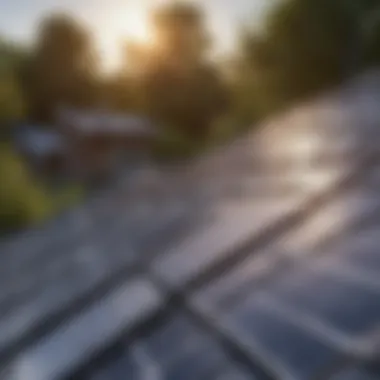
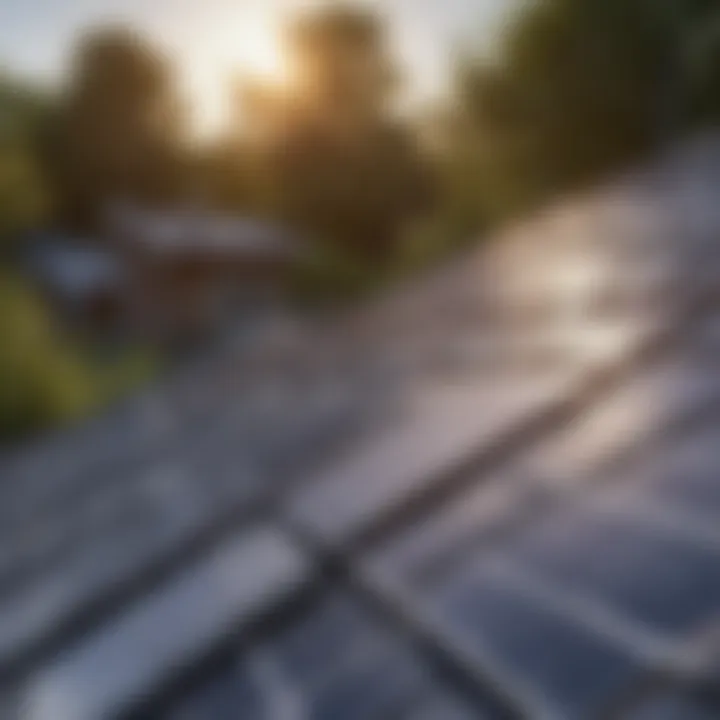
Although prefabrication requires careful planning and coordination, its advantages often outweigh potential drawbacks.
Modular Design and Flexibility
Modular design takes prefabrication a step further. This technique involves creating modular units or sections that can be combined in various configurations. It provides users with exceptional flexibility in both design and function.
Key aspects of modular design include:
- Adaptability: Homeowners can modify the layout as needs change, making this approach suitable for different life stages.
- Resource Efficiency: Modular homes can be designed to optimize natural light and airflow, reducing reliance on artificial heating and cooling.
- Community Integration: Modular designs can easily blend with existing structures, maintaining aesthetics in neighborhoods.
This approach, while often more expensive upfront, can lead to long-term savings in energy consumption and maintenance.
"Innovative construction methods not only enhance the livability and sustainability of small eco houses, but they also pave the way for a future where housing is adaptable and resource-efficient."
In summary, innovative construction techniques like prefabrication and modular design are reshaping the landscape of small eco houses. By embracing these methods, you can contribute to a more sustainable future while increasing the functionality and enjoyment of your living space.
Smart Technologies in Small Eco Homes
Smart technologies represent a pivotal evolution in the functionality and sustainability of small eco houses. Implementing such technologies can enhance energy efficiency and promote a greener lifestyle. These innovations do not just facilitate convenience but also contribute significantly to reducing the ecological footprint of homes. Some core areas of concern include home automation systems and energy monitoring solutions, both of which benefit homeowners and the environment alike.
Home Automation Systems
Home automation systems play a major role in small eco houses. These systems allow for the remote control of various home functions. This can include lighting, heating, and even security systems. Through the use of smart devices, homeowners can manage their energy use effectively. For instance, smart thermostats can learn patterns in daily routines and adjust the temperature accordingly, optimizing both comfort and energy consumption.
The benefits of these systems are numerous:
- Convenience: Homeowners can control appliances from anywhere, which enhances everyday living.
- Energy Efficiency: Smart systems can reduce unnecessary power usage. For example, lights can automatically turn off when a room is unoccupied.
- Cost Savings: With better energy management, utility bills can decrease.
- Integration with Other Technologies: Home automation can connect with energy monitoring solutions for continuous feedback on energy consumption.
Energy Monitoring Solutions
Energy monitoring solutions offer vital insights into energy consumption in small eco houses. By tracking how much energy is being used, homeowners gain awareness of their usage patterns. These solutions, typically offered as smart meters or mobile applications, enable more informed decisions.
Some specific advantages of energy monitoring include:
- Real-Time Data: Homeowners can view live energy use, allowing for immediate adjustments to lower usage.
- Identifying Energy Hogs: Energy monitoring makes it easier to detect which appliances are consuming excessive power, prompting solutions.
- Environmental Impact: Greater awareness leads to more conscious decisions regarding energy consumption, reducing the carbon footprint.
- Long-Term Savings: By understanding consumption trends, strategies can be implemented for significant cost savings.
"Adopting smart technologies in eco houses is not only about saving energy; it's about transforming lifestyle and enhancing our connection to the environment."
Small eco houses can greatly benefit from the incorporation of smart technologies. These systems dovetail neatly with the principles of sustainable design, further supporting a lifestyle that values ecological integrity. Homeowners should consider integrating both home automation systems and energy monitoring solutions into their living spaces for an enhanced, smart, eco-friendly home experience.
Case Studies of Successful Small Eco Houses
Case studies serve as powerful examples of how small eco houses can meet the needs of modern living while adhering to sustainable principles. These real-world examples highlight the effectiveness of small eco house designs, showcasing innovations and challenges faced during construction. They offer insights into various aspects such as resourcefulness, community integration, and financial viability. These case studies are more than just homes; they are blueprints for future developments in eco-friendly living.
Local Examples and Innovations
In local contexts, small eco houses demonstrate adaptability and creativity. For instance, in the Pacific Northwest, a couple implemented a small eco home using reclaimed cedar wood and local stone. This design prioritized insulation and a passive solar orientation, allowing natural light to reduce reliance on electricity. An essential element of this project was the rainwater harvesting system, which showcased sustainable water use practices.
Such projects often engage with the local community, leading to unique solutions tailored to regional challenges. The shared knowledge in these neighborhoods fosters a culture of sustainability, encouraging others to adopt similar approaches. Moreover, these case studies can result in economic benefits, as local material use can reduce transportation costs and support regional industries.
Global Perspectives
On a global scale, small eco houses reflect diverse approaches to sustainability. A notable example is the tiny houses movement flourishing in Europe. In Denmark, a community of small eco homes was established, featuring smart grid technology that allows each home to efficiently manage energy usage. The concept of cooperative living has been crucial in this setup, promoting shared resources like gardens and tool-sharing initiatives among residents.
In fact, various regions in the globe adopt distinct design philosophies. For example, in Japan, many small eco houses are built with modular designs that consider the seismic nature of the area. These houses often use materials that provide durability while ensuring minimal environmental impact. The success of these homes contextualizes the idea that while styles may differ, the underlying principles of sustainability remain consistent worldwide.
"Small eco houses embody the essence of community and innovation, proving that living sustainably can be achieved across diverse cultural landscapes."
In summary, the examination of case studies, both local and global, provides substantive evidence of how small eco houses can address environmental challenges, enhance community well-being, and inspire a new generation of homeowners and builders alike.
The Role of Community in Eco Housing
In the realm of small eco houses, community plays a pivotal role. This connection fosters not only a sense of belonging but also promotes sustainability practices that can reinforce the benefits of eco-friendly living. By sharing experiences and resources, community members can enhance their understanding and implementation of small eco houses. Its significance cannot be overstated, as it directly influences how sustainable practices are adopted and maintained.
Collaborative Living Spaces
Collaborative living spaces emerge as a vital aspect of community in eco housing. These are more than just shared homes; they are environments where residents partake in managing communal resources. This concept encourages interaction and stronger relationships among residents.
Collaborative living often leads to:
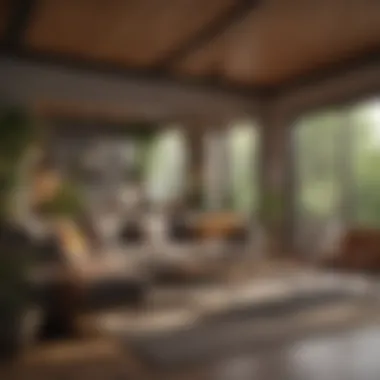
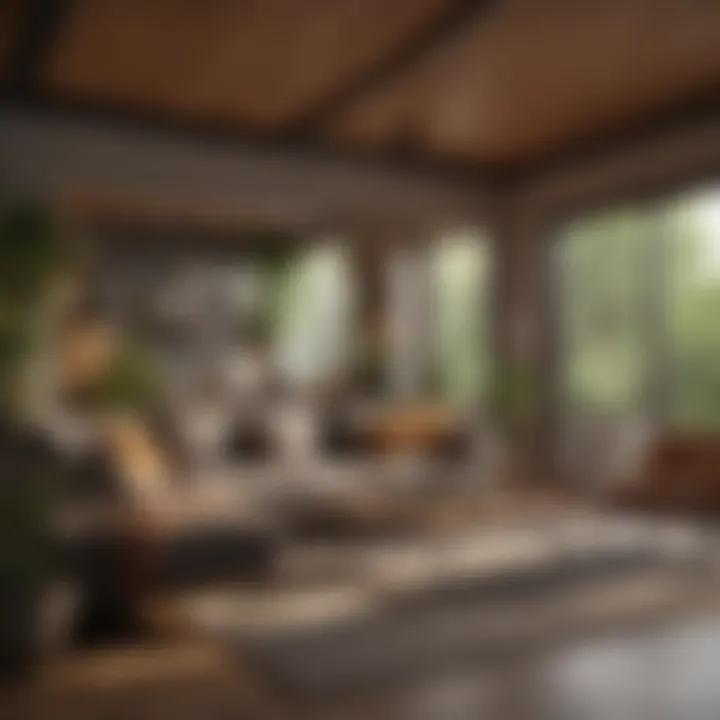
- Shared Resources: This includes tools, appliances, and even transportation options. By pooling resources, residents can lower their individual costs.
- Community Projects: Collective gardens, workshops, and eco-friendly initiatives flourish in such spaces. These projects build skills and emphasize sustainable practices.
- Social Interaction: People living in proximity can easily establish connections. These bonds create networks of support that enhance mental well-being, allowing individuals to share knowledge about sustainable living.
Thus, collaborative living spaces amplify the benefits of small eco houses while nurturing a supportive community.
Impact on Local Economy
The impact of small eco houses on the local economy is significant. Firstly, these homes often rely on local materials and labor for construction. This not only minimizes transportation emissions but also supports local businesses and workers.
Moreover, when people choose eco housing, it often drives demand for green products and services within the community. This could range from:
- Sustainable Building Materials: Companies specializing in eco-friendly resources often gain new customers in these setups.
- Renewable Energy Services: The need for solar panels and energy efficiency solutions can spur local entrepreneurship.
- Local Jobs: Small eco house communities can create job opportunities in various sectors, from construction to education.
Additionally, communities adopting eco housing can attract eco-conscious tourists. These visitors may seek to learn about sustainable practices, thereby generating income for local businesses.
Engaging in eco housing is not just a personal choice; it enhances community strength and contributes to the local economy.
Challenges in Adopting Small Eco Houses
The movement towards small eco houses is admirable, but it is not without its challenges. Understanding these difficulties is crucial in addressing the barriers that homeowners and builders face when considering this innovative living solution. By examining both regulatory obstacles and financial barriers, we can better appreciate the complexities involved in adopting small eco houses and find ways to mitigate these issues.
Regulatory Obstacles
Regulatory challenges are among the most significant hurdles in adopting small eco houses. Zoning laws, building codes, and regulations often favor traditional home designs and larger dwellings. These regulations can inhibit the development of small eco houses due to their unique structures or alternative building materials, which may not comply with conventional codes.
- Zoning Restrictions: Many local governments impose strict zoning laws that can limit where small eco houses can be built. For instance, if a specific area is zoned for single-family homes, a small eco house may face rejection simply because it does not conform to the larger, conventional housing standards.
- Permit Challenges: Securing permits for new construction can be a time-consuming process, especially for unconventional buildings. Small eco houses sometimes fall into the grey area, complicating the approval process and prolonging construction times.
- Building Codes: Small eco houses often utilize innovative design and materials. However, outdated building codes might not accommodate the modern practices of sustainable construction. This disconnect can create confusion for builders and setbacks in project timelines.
Addressing these regulatory obstacles requires collaboration between policymakers, builders, and eco housing advocates. By encouraging more flexible regulations and updating codes to reflect modern sustainable practices, communities can foster the growth of small eco houses.
Financial Barriers
Financial barriers represent another significant roadblock for those interested in small eco houses. While these houses often promise long-term savings due to lower energy use and maintenance costs, the initial financial commitment can be daunting.
- High Upfront Costs: The initial cost of materials and construction for eco-friendly homes can be higher than traditional homes. Eco materials, energy-efficient technologies, and modern construction techniques can require a substantial upfront investment that may deter potential homeowners.
- Limited Financing Options: Although the interest in sustainable living is growing, financial institutions may still have limited offerings for loans specific to eco-friendly houses. While some banks are beginning to recognize the value of green building, not all provide equal access to financing for such projects.
- Valuation Issues: Eco houses sometimes face challenges in home appraisals. Traditional appraisal methods may not accurately capture the value added by sustainable features, making it difficult for homeowners to gain financing based on accurate property value assessments.
To overcome these financial challenges, it is essential for potential homeowners to seek funding opportunities, such as grants and low-interest loans dedicated to eco-friendly projects. Raising awareness about the long-term cost benefits of small eco houses can also help shift the perception and attract more investors and financial institutions to participate in this movement.
It is clear that to promote the adoption of small eco houses, both regulatory frameworks and financial mechanisms need to evolve. Addressing these challenges head-on is crucial for paving the way for a sustainable future in housing.
Future of Small Eco Houses
The future of small eco houses reveals a significant intersection of innovation, environmental consciousness, and community values. In an era where climate change dominates discussions about urban development and housing, these homes emerge as a solution that balances modern living with ecological responsibility. The importance of this topic lies in understanding how small eco houses can adapt over time while addressing the pressing needs of a changing environment.
One element to consider is the integration of technology and sustainability. As smart technologies become more accessible, their incorporation into small eco houses can enhance energy efficiency and reduce utility costs. For homeowners, these innovations mean reduced long-term expenses and a smaller carbon footprint.
Emerging Trends
Emerging trends in small eco houses are reshaping what sustainable living means. Some notable trends include:
- Tiny House Movement: This trend keeps growing, emphasizing minimalism and functional living. Tiny houses encourage individuals to reconsider their belongings and their impact on resources.
- Green Roofs and Walls: Incorporating vegetation into building designs supports biodiversity, reduces heat, and promotes better air quality.
- Local Materials: Using locally sourced materials minimizes transportation emissions and supports the local economy.
- Community-Based Designs: An increasing number of homeowners are looking to share resources through co-housing arrangements, emphasizing community connectivity.
These trends signal a broader acceptance of smaller, more eco-conscious living spaces as viable options in both urban and suburban settings.
Role of Policy in Promoting Sustainability
The role of policy in promoting sustainability cannot be overstated. Government policies shape the feasibility of small eco housing projects and influence market momentum. Some key aspects include:
- Incentives for Sustainable Building: Many regions offer tax credits or rebates for solar installations and energy-efficient appliances. These incentives make it more attractive for homeowners to invest in eco-friendly solutions.
- Zoning Reforms: Adjusting zoning laws to permit smaller homes and eco-friendly construction can encourage developers to create sustainable projects that comply with contemporary needs.
- Research and Development Funding: Government support for innovative building techniques and eco-friendly technologies ensures progress in the sector.
- Public Awareness Campaigns: Education initiatives can inform the public about the benefits of small eco houses, promoting a shift in public perception.
Epilogue
The discussion surrounding small eco houses holds great significance in today's world. As we face escalating environmental issues, the relevance of sustainable living becomes increasingly pronounced. The advantages of small eco houses are manifold, encompassing not only environmental sustainability but also social and economic factors that resonate with a diverse audience.
Summary of Key Takeaways
In reflecting on the journey through small eco houses, several key points emerge. First, the design principles prioritizing eco-friendly materials and energy efficiency demonstrate how thoughtful architecture can reduce ecological footprints. Second, the integration of advanced technologies shows a path towards greater efficiency and lower utility costs. Third, case studies provide real-world examples of success, encouraging potential homeowners to consider this lifestyle change as practical and beneficial.
"Sustainable living is not just a choice; it is an imperative for future generations."
The exploration of community impact shows that these homes foster collaboration, enhance local economies, and promote psychological well-being through shared spaces. Finally, understanding the challenges faced, such as regulatory barriers and financial obstacles, helps in preparing audiences for potential hurdles as they pursue eco-conscious living.
Call to Action for Future Developments
Looking ahead, it is crucial to advocate for policies that support the construction and adoption of small eco houses. Citizens should engage with local governments to promote incentives for eco-friendly building practices. Educational programs can enhance public awareness, providing resources on sustainable design and construction methods.
Future developments should focus on advancing technology integration within eco houses and increasing access to affordable eco-friendly materials. Homeowners, interior design enthusiasts, and community leaders should unite for initiatives that champion sustainability. Embracing these practices will not only enhance living conditions but also contribute to a healthier planet for generations to come.



